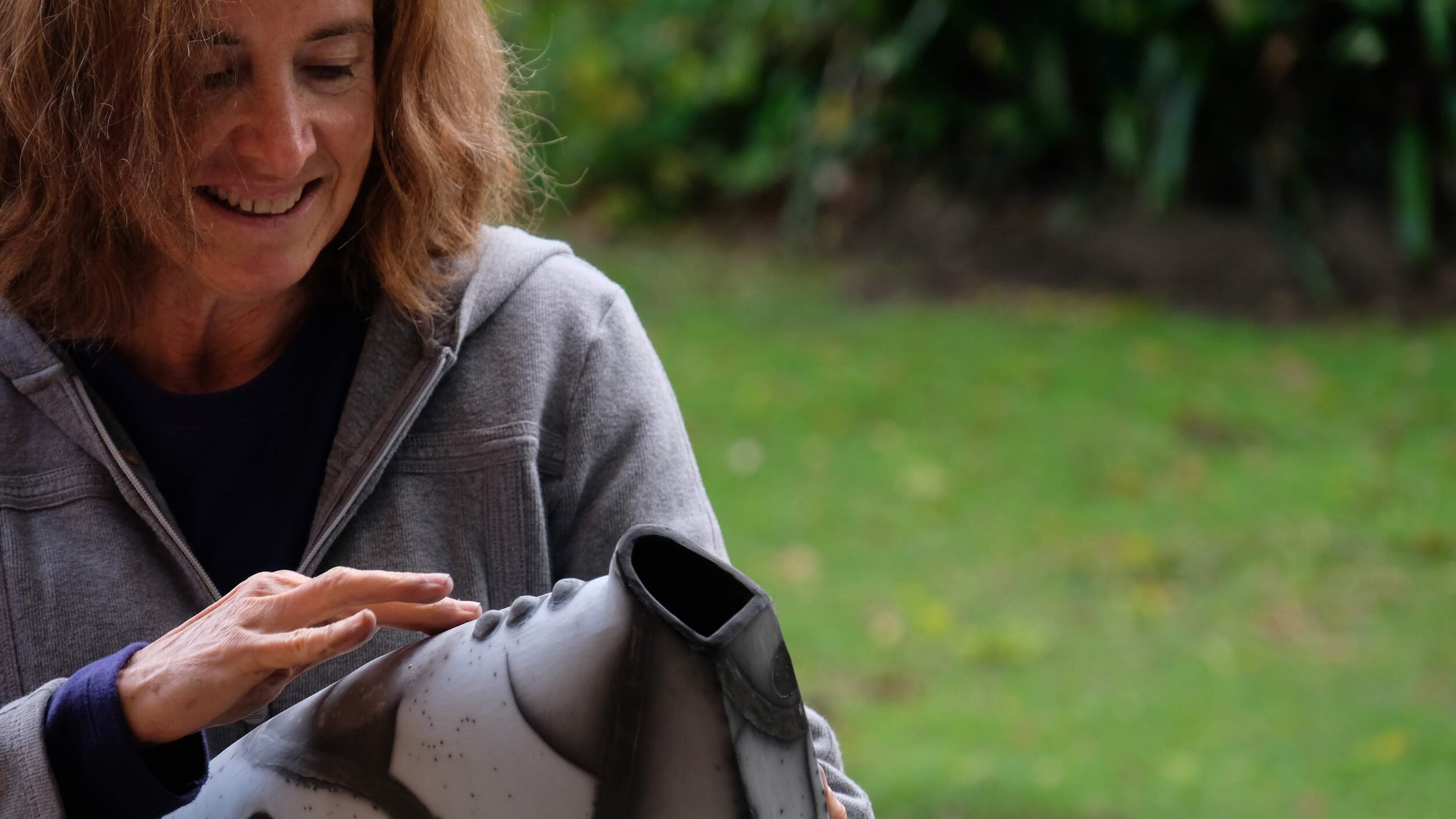“The vessel is a powerful metaphor for the body, with each part of the pot being named for a corresponding area of the body. A full lip, a gentle curve of the neck, a round belly or a broad shoulder – these elements combine to animate the vessel.”
Izette Felthun is a ceramic artist who grew up and was educated in South Africa. The female form has always been a focus of her work.
Her early work was influenced by the highly burnished and decorated blackened beer pots of the indigenous South African Venda tribe.
Subsequently, over time, the work has evolved to a point where she explores her identity as an artist and a woman by celebrating the female form.
She creates abstract sculptures, which have a sense of movement and uses the vessel to challenge the perception and representation of the female form in society.
Her goal is to break with the ideal beauty of classical sculptures and find a new relationship between art and current perceptions of the female body.
The work seeks to combine figurative imagery with the format of the traditional clay vessel.
Education
2012-13: Diploma in Ceramics, Hornsby TAFE, NSW Australia
2010-11: Diploma of CeramicsHornsby TAFE, NSW, Australia
2008: Certificate IV in Ceramics
1982: Bachelor of Arts (Creative Arts) and Higher Education Diploma, University of Stellenbosch, South Africa
Teaching
1989 - 2017: Sculpture and Creative Forms, Ku-ring-gai Community Art Centre, Roseville
Current: Waverley Woollahra Arts Centre
Sculpture workshops at different venues
Awards
2013: Distinction - Advanced Diploma of Visual Arts (Ceramics)
2013: Overall Achievement Award in Ceramics
2013: Keane Ceramics Award for Advanced Diploma in Ceramics
2013: Selected to exhibit – Hornsby Art Prize Exhibition
2012: Hornsby Art Prize: Sculpture - 1st Place
2011: State Medal Winner for Diploma of Ceramics – NSI TAFE
2011: Kerrie Lowe Gallery Award
2011: Pittwater Ceramic Award - 2nd Place



